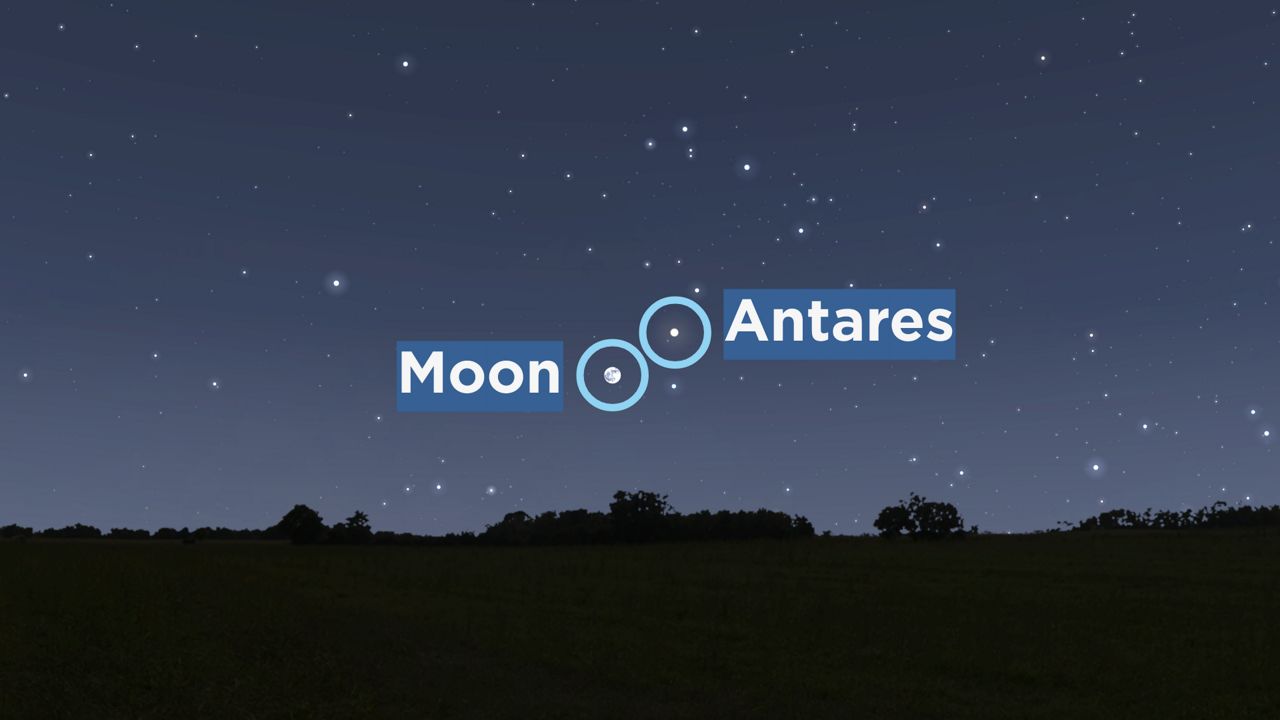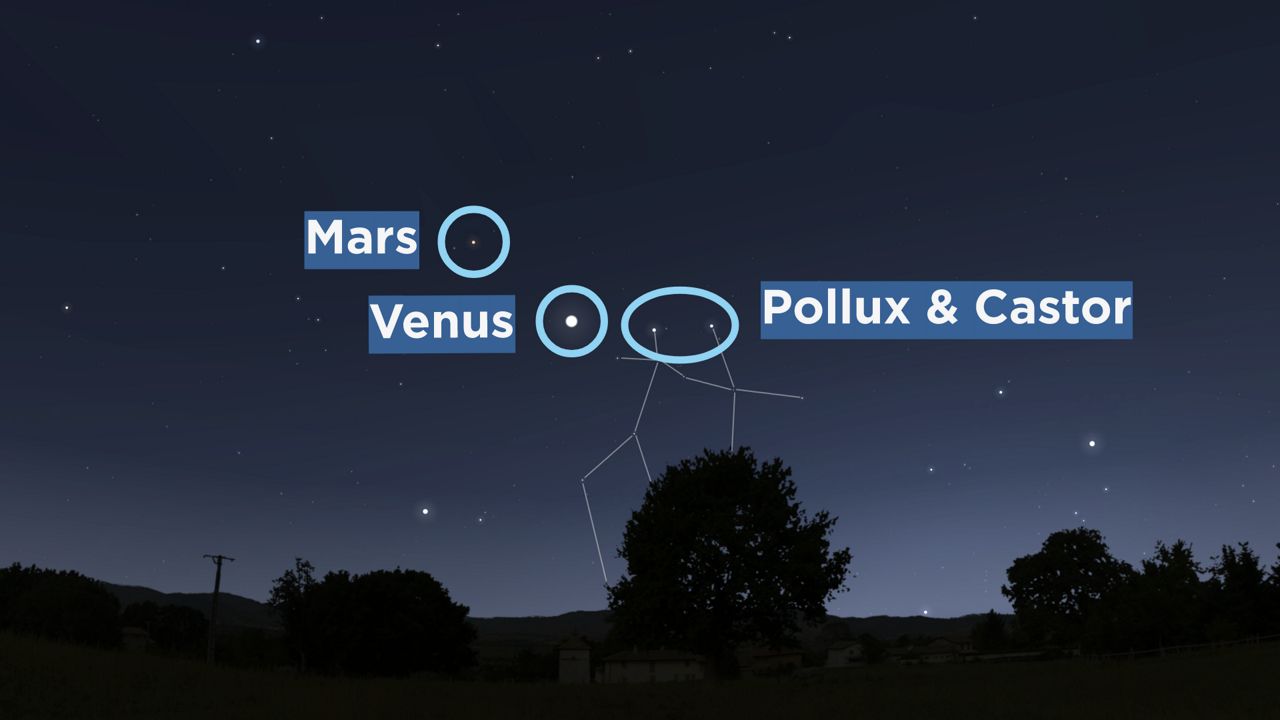The summer season is upon us, and if you’re out enjoying it this weekend, check out the late-evening sky. You’ll have a few things to look at.
The moon is its fullest Saturday night at 11:43 p.m. Eastern Time but will appear full throughout the weekend.
Native Americans also have referred to this full moon as the Gardening Moon, Flowering Moon or Summer Moon.
See if you can spot the star Antares to the upper-right of the moon. It’ll appear as an orange dot. A pair of binoculars can help you find it.

As is often the case, looking at other parts of the sky will reveal other sights. Venus will help you find a couple.
Look for Venus in the western sky an hour or two after sunset. The “evening star,” as it’s sometimes called (even though it's a planet) should be easy to find since it’s bright. To its upper-left is Mars, and to its right are Pollux and Castor. Those two stars are the heads of the twins in the constellation Gemini.

More celestial sights are ahead this summer, including a supermoon and a couple of meteor showers.
Our team of meteorologists dives deep into the science of weather and breaks down timely weather data and information. To view more weather and climate stories, check out our weather blogs section.



